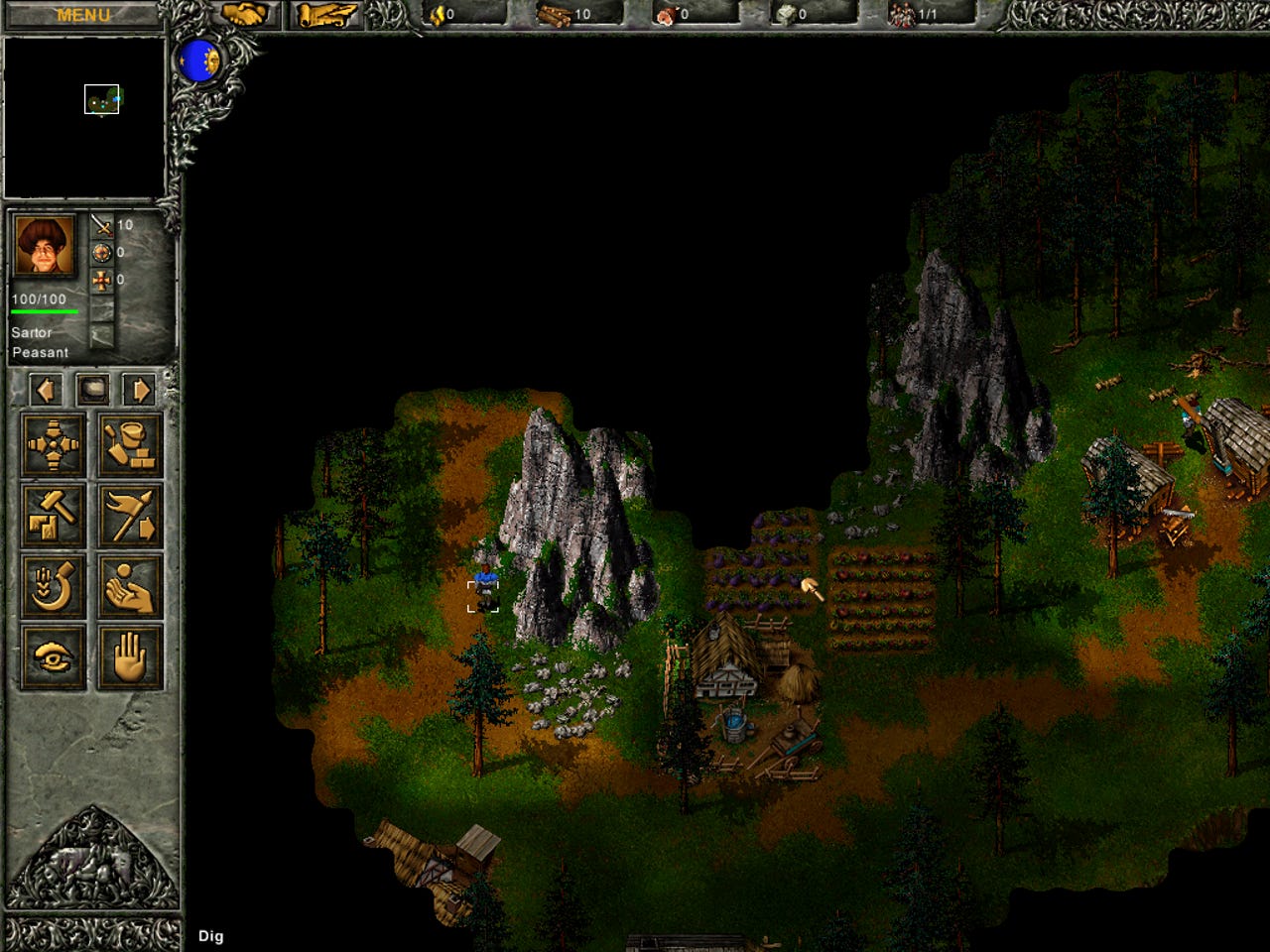Photos: Retro computer games that Eastern Europe played as Iron Curtain fell

East Europe's retro games
Home computers and video games were a luxury in Eastern Europe before the fall of the Iron Curtain and in the troubling years that followed it. People had to stand in line for food rations and basic household items, and many lived in cold, dark apartments, often experiencing power outages.
Even in such circumstances, there were a few developers, like Andre Weissflog, from East Germany who got paid to write video games. They learned to be resourceful and worked on computers that were often cloned from the UK's Sinclair ZX Spectrum.
Soon, studios such as the Budapest-based Andromeda Software started to work for Western European and American publishers.
Some of the games created in Eastern Europe copied or adapted titles made in the West.
However, there were also creative ideas, such as Tetris by Russian game designer Alexey Pajitnov, which quickly spread among enthusiasts and became a global phenomenon.
Political satire was also present in Eastern European games. One such example was the Russian game, Perestroika, where bureaucrats try to catch a democrat frog. Video games were stored on audio cassettes back then, and even on vinyl records.
Some Western European titles also entered the bloc, brought in by pilots and diplomats, who hid them inside their suitcases to bypass airport security checks.
Usually, communist countries didn't allow Western storage media such as audio tapes, disks or VHS tapes through customs to prevent what they called 'Western propaganda'.
Here are some of the most popular games to come out of Eastern Europe.
Scarabaeus, aka Invaders of the Lost Tomb, Hungary
An astronaut and his tiny black dog explore the 3D maze of an Egyptian tomb aiming to find the sacred emerald Scarabaeus.
They have to avoid spiders and zombies, to solve puzzles and collect items such as hieroglyphs.
Scarabaeus, created by Hungarian company Andromeda Software for the Commodore 64, has a realistic 3D feeling, although it was released in 1988.
Jungle, East Germany
A small, yellow creature named Bananas-Joe needs to find its way out of a scary jungle. It has to climb ropes and walk on floating islands to reach a magical bag, but monsters are following it and human skulls fall on its head.
Andre Weissflog and Bernd Beyreuther created the game in 1989, and it quickly became popular in East Germany, Weissflog told ZDNet. When Bananas-Joe dies, the message "Ashes to ashes. Dust to dust." appears on the screen.
Digger was another popular game in East Germany.
You can play Jungle in an emulator.
Perestroika, aka Toppler, Russia
This game, which was released in 1990 and runs on DOS, features the image of the Soviet Union's last leader, Mikhail Gorbachev.
His policy of reforming the economic and political system was called Perestroika, which means 'restructuring'.
Perestroika, aka Toppler, Russia
A small frog, nicknamed Democrat, jumps from one shrinking lily pad to another, hoping to reach the top-right corner of the screen. More massive creatures, the Bureaucrats, are on its tail, trying to eat it.
The shrinking lily pads symbolize the ever-changing laws and regulations in the Soviet Union. The frog can catch dots of various colors that represent grocery goods, currency transactions, progressive taxes, and adventures.
Tetris, Russia
Pictured here is one of the first English versions of Tetris from 1984.
The most famous computer game made in Eastern Europe, Tetris was created in 1984 by Alexey Pajitnov, a software engineer who worked for the Soviet Academy of Sciences in Moscow.
He wrote several simple games just for fun, not for profit. He wanted to make his job of testing new hardware a little more entertaining and used games to see if the hardware worked.
When he developed Tetris, he took inspiration from 'pentominoes', a puzzle game popular at that time in the Eastern Bloc. Wooden pieces made of cubes glued together in different arrangements had to be assembled to form a 5x5 square.
In 1993, cosmonaut Aleksandr Serebrov brought Tetris to the space station Mir, making it the first video game to go into space.
BlockOut, Poland
A company in Poland, California Dreams, took the idea of Tetris and upgraded it. It created a true 3D version of the game, with blocks falling into a pit. Instead of aligning them to form a horizontal line that would disappear, the gamer had to build a full square.
Because it had rotating geometrical objects, BlockOut was seen as educational. The New York Times wrote that "the skills required to master it are not unrelated to mathematics, particularly geometry".
A study done in 1993 at the University of Vienna did indeed show that BlockOut improved the spatial visualization ability of teenagers.
Gaina, The Chicken, Romania
The Chicken, a Romanian Chuckie Egg clone, was written in the 1980s by two engineers working for the Computing Center in the town of Braila. They say they wrote the code "totally outside business hours".
One of them, Constantin Teodorescu, told ZDNet that the game spread quickly from one floppy disk to another, so they decided to use copy protection to prevent piracy. Not because they wanted to make money, but rather because they wanted to distribute the game personally and know the people who played it.
The Chicken displayed messages such as "Don't smoke", "Don't travel without a ticket" or "Go and have a beer to improve your strength".
Towdie, Slovakia
Little Towdie has a big mission: it's the only creature that can save the kingdom of Alkria, which is being destroyed by the flames of a dragon named Quido.
Towdie has to climb stairs and ropes, walk and jump, and solve puzzles to advance through the game. Being outgoing, it interacts with locals, including a wizard, a prince, and a princess.
The game was written for ZX Spectrum in 1994 by brothers Dusan and Ladislav Balara.
Crux 92, Czech Republic
The year is 2210, and humanity has built a Martian base. However, it needs a resource, Filium, that can be found in the Crux constellation.
As a cosmonaut, players have to protect themselves from enemies by pushing red boxes and activating bombs. Prague-based Marek Trefny wrote this action puzzle video game in 1992.

Tzar: The Burden of the Crown, Bulgaria
This real-time strategy game was released a bit later, in 2000, but its animations and features suggest it merits inclusion.
Tzar: The Burden of the Crown is "a cross between Blizzard's WarCraft and Ensemble's Age of Empires", ZDNet wrote back then in a review. In this fictional medieval age, the gamer has to conquer neighboring kingdoms or to destroy castles built by other populations.
There are four types of resources players can gather: food, wood, stone, and gold. Developed by Bulgarian company Haemimont Games, Tzar: The Burden of the Crown gained its reputation after it was published in several European gaming magazines.